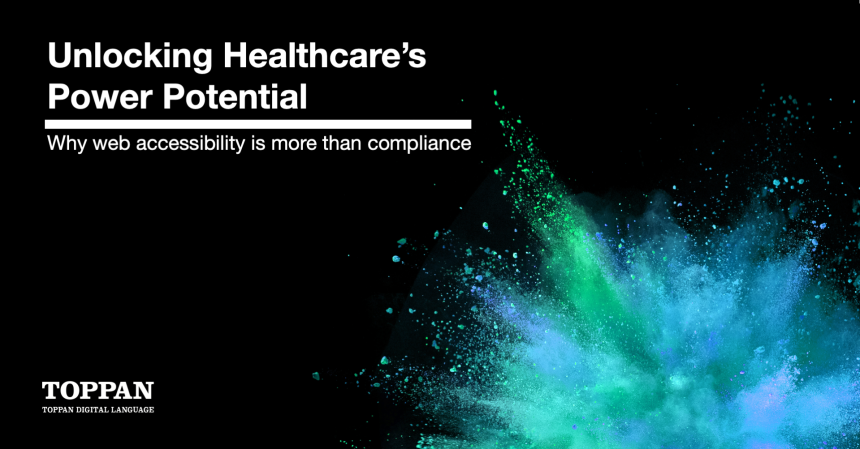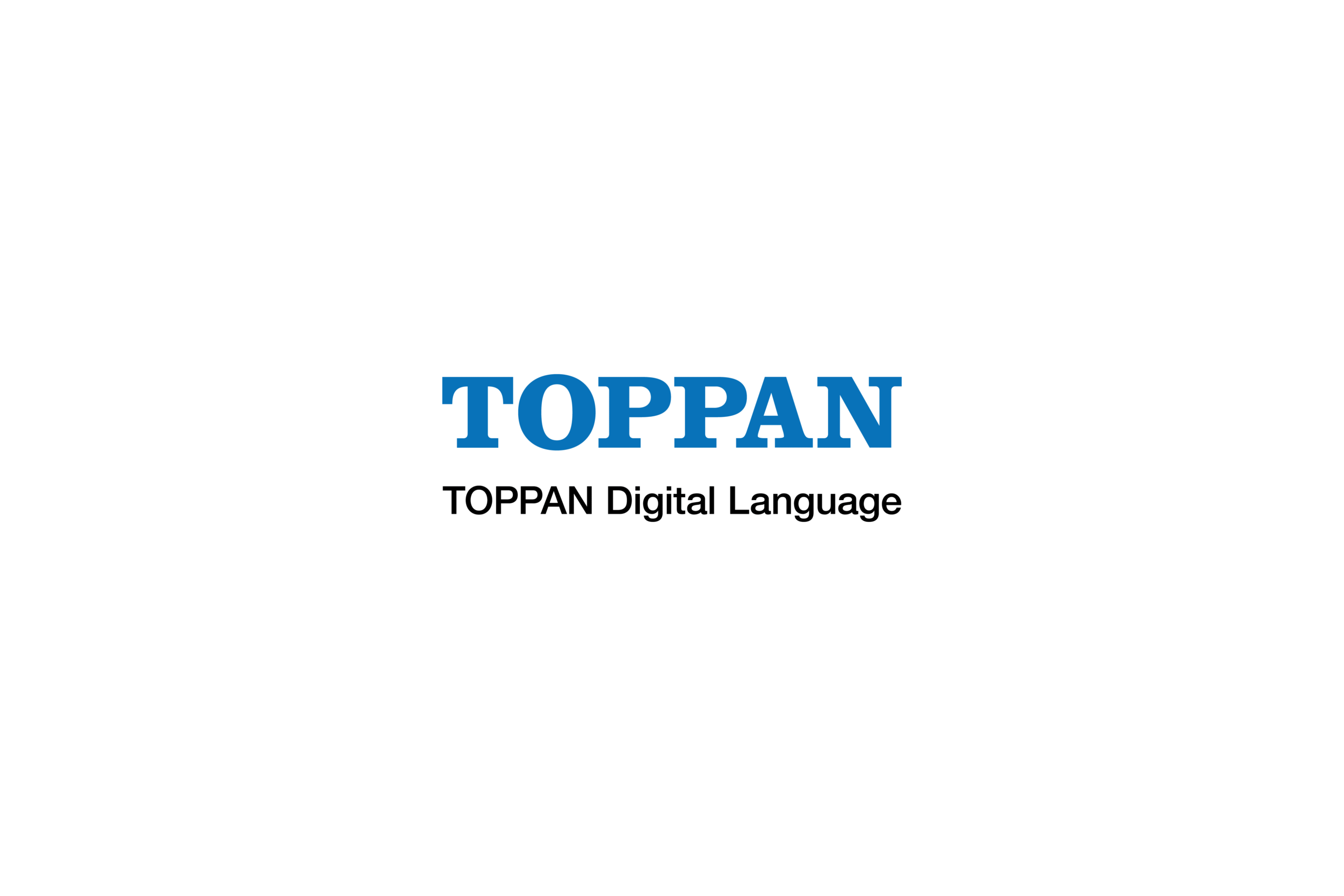In summary: Web accessibility in healthcare goes beyond mere compliance. It ensures an inclusive, user-friendly experience for both patients and members when using healthcare platforms online.
Digital Healthcare Evolution: The digital health market is booming, but not all patients have equal access due to barriers like visual impairments or linguistic challenges.
Linguistic Accessibility: Centralizing translation processes ensures brand consistency, faster turnaround times, and operational savings.
WCAG’s Broad Reach: Web Content Accessibility Guidelines (WCAG) offer a comprehensive approach to cater to diverse patient needs, enhancing their digital healthcare experience.
Benefits of Accessibility: Beyond avoiding legal repercussions, healthcare providers benefit from increased patient satisfaction, trust, broader reach, and improved health outcomes by ensuring digital accessibility.
In every walk of life, we’ve seen how the ‘one-size-fits-all’ approach often falls short. It’s like wearing a pair of ill-fitting shoes; they either pinch too hard or don’t support enough. In the healthcare industry, this scenario isn’t much different. Here, it’s not about footwear but something much more essential: our well-being, health, and lives.
As diverse as our backgrounds and cultures can be, our shared need for tailored, accessible healthcare resonates universally. The demand for holistic accessibility isn’t a mere request; it’s an imperative. After all, when it comes to our health, shouldn’t the fit be just right?
Gone are the days when medical advice was limited to in-person visits alone. We’ve now entered into a new era, with virtual consultations, AI-driven diagnostics, and online prescription refills.
In fact, the digital health market size was valued at USD 77.0 billion in 2022 and is projected to grow at a compound annual growth rate of 17.10% from 2023 to 2030.
But every coin has two sides. While many reap the benefits of this digital age, others face barriers when obtaining healthcare or insurance cover. Take a visually impaired patient needing to book an appointment with a doctor online, for example. If the patient portal isn’t compliant with the latest web accessibility standards, then booking an appointment can become a challenge. The same can be said for a multilingual consumer seeking a medical insurance policy.
Adhering to ADA and language access mandates is more than a legislative requirement; it’s a commitment to inclusivity. It ensures that everyone has an equal opportunity to digital healthcare.

The First Hurdle: The Language Barrier
Diverse patient populations bring diverse linguistic needs. According to the Agency for Healthcare Research and Quality, over 25 million people (that’s close to the population of Texas) don’t speak English as their first language. In Los Angeles alone, it’s estimated that there are over 200 languages spoken. The demand for translation in healthcare is palpable.
From prescription labels and websites to post-operative care instructions and insurance policy documentation, effective translation safeguards against misunderstandings, potentially saving lives. Beyond that, it fosters an environment of trust, letting patients know that their healthcare providers and insurers genuinely care about their well-being.
With recent proposals to amend policies to improve access to non-English speaking individuals, it’s recommended that healthcare providers and organizations invest in putting together a comprehensive language access plan to ensure they meet the needs of this underrepresented group.

The Broader Spectrum
True accessibility extends well beyond language. Imagine the challenges someone grappling with Parkinson’s might face. A lack of keyboard-only navigation on an insurance site isn’t a mere inconvenience; it’s a barricade. Or consider someone whose failing eyesight makes navigating websites with small fonts an arduous task.
This is the beauty of the WCAG standards. They don’t just account for one type of disability; they encompass a myriad of needs, ensuring a user-friendly experience for all.
A 2021 study of 50 clinic websites in JAMA Network Open found patients with disabilities had higher satisfaction when clinic websites and patient portals were accessible and compatible with screen readers.
As technology becomes ever more intertwined with our daily health needs, digital accessibility is now a necessity.
Moreover, by adhering to established standards, healthcare providers and insurers avoid legal pitfalls. Such proactive measures can save organizations from hefty non-compliance fines. Other benefits also include:
- Increased Trust and Engagement – Accessible platforms ensure patients are not left struggling or feeling marginalized.
- Avoidance of Legal Consequences – Proactively ensuring accessibility helps organizations stay compliant with regulations.
- Financial Savings – Beyond the obvious avoidance of legal fines, the investment in accessibility can lead to reduced costs over time, as well as bolster patient and member retention.
- Broader Reach – By ensuring accessibility, healthcare providers can cater to a wider demographic, including people with disabilities and multilinguals, thus potentially increasing their patient base.
- Enhanced Reputation – In an age where corporate responsibility is more important than ever, being at the forefront of accessibility can greatly improve an organization’s reputation.
- Employee Morale and Productivity – Employees in accessible environments often report higher job satisfaction.
- Better Health Outcomes – Ultimately, making healthcare more accessible ensures that every patient, regardless of their background or abilities, gets the best possible care, leading to better overall health outcomes.

The WCAG Commitment
Upgrading from WCAG 2.0 to 2.1 AA is more than a technical shift. It represents an evolutionary step in how we perceive digital inclusivity. When healthcare providers and insurers stand by these guidelines, they make a powerful statement. They declare their intent to ensure that their services are of high quality and universally accessible, but also universally accessible. It’s a commitment to evolving, not just with technology, but with people’s diverse needs.

Navigating the Path to 508 Compliance
Achieving 508 compliance is no trivial task. It’s a rigorous process demanding attention to detail, commitment, and continuous iteration. Every healthcare provider that takes this path will face its own unique challenges, but the rewards are undeniable. The steps towards achieving compliance are multifaceted, from fine-tuning tagging structures and ensuring logical reading orders for assistive technologies to conducting thorough quality checks.
At TOPPAN Digital Language, we help Healthcare insurers and organizations achieve 508 compliance, along with other accessibility standards, including WCAG 2.0 and PDF-UA using a 5-point checklist:
- Tagging Structure – Consistency in tagging structure for tables and list elements
- Logical Reading Order – Keeping the logical reading order in a document consistent with tagging hierarchy for assistive technology to read out
- Order Panel Verification – Making sure all the content client-supplied PDFs are either tagged or artefact
- Quality Check – Electronic & manual checks, each carried out by a separate team of experts
- Content Integrity – Integrated electronic workflow (including active URLs, links and TOCs)
Additionally, we offer a full suite of translation, interpretation, and supplementary accessibility language solutions to fully support the entire multilingual on- and offline patient journey.
Augmented reality, machine learning, and AI diagnostics all hint at a future rife with possibilities. Yet, the heart of healthcare will always be people. As providers and insurers, the challenge is twofold: harness cutting-edge technology while ensuring that every innovation is crafted with accessibility in mind.

